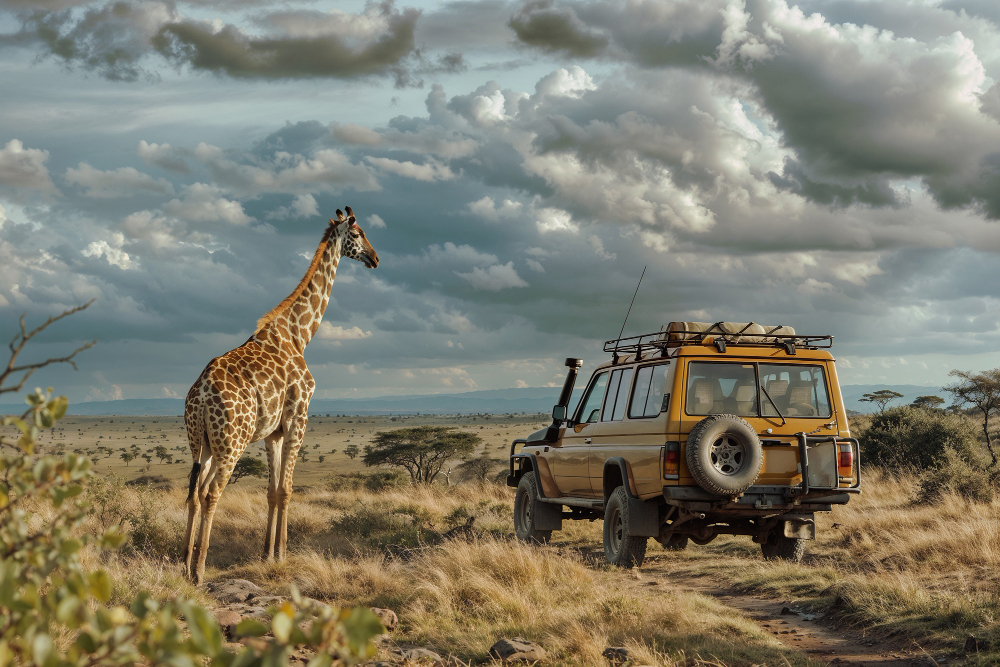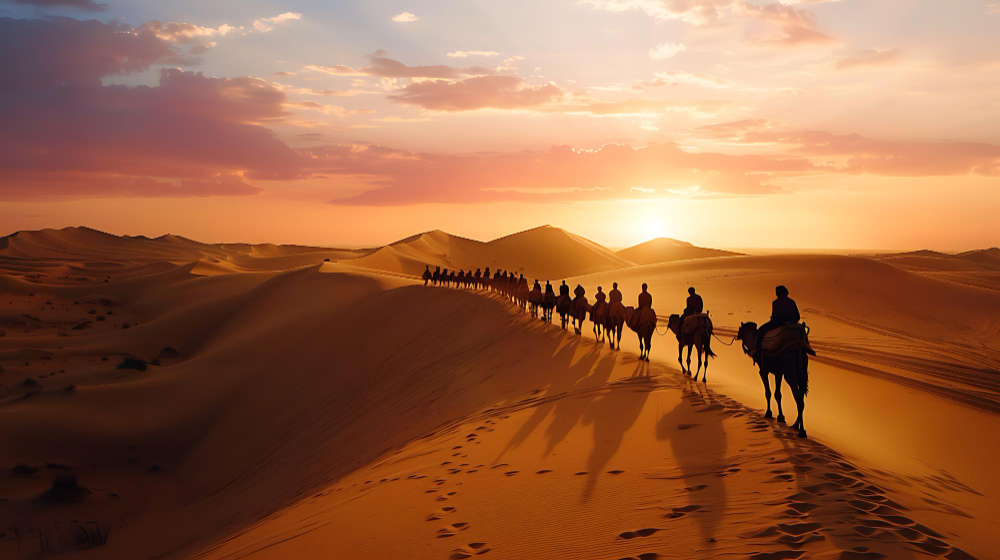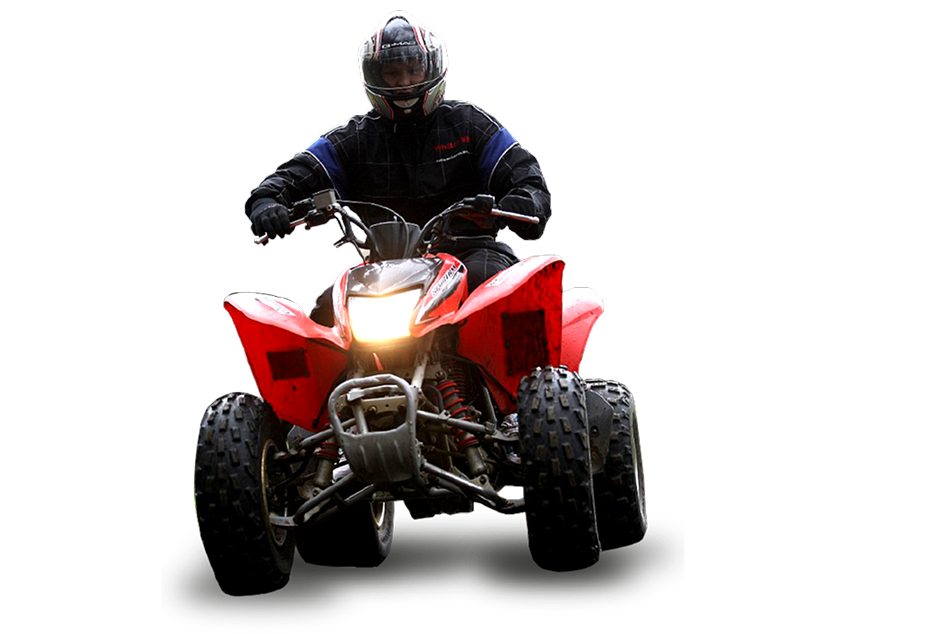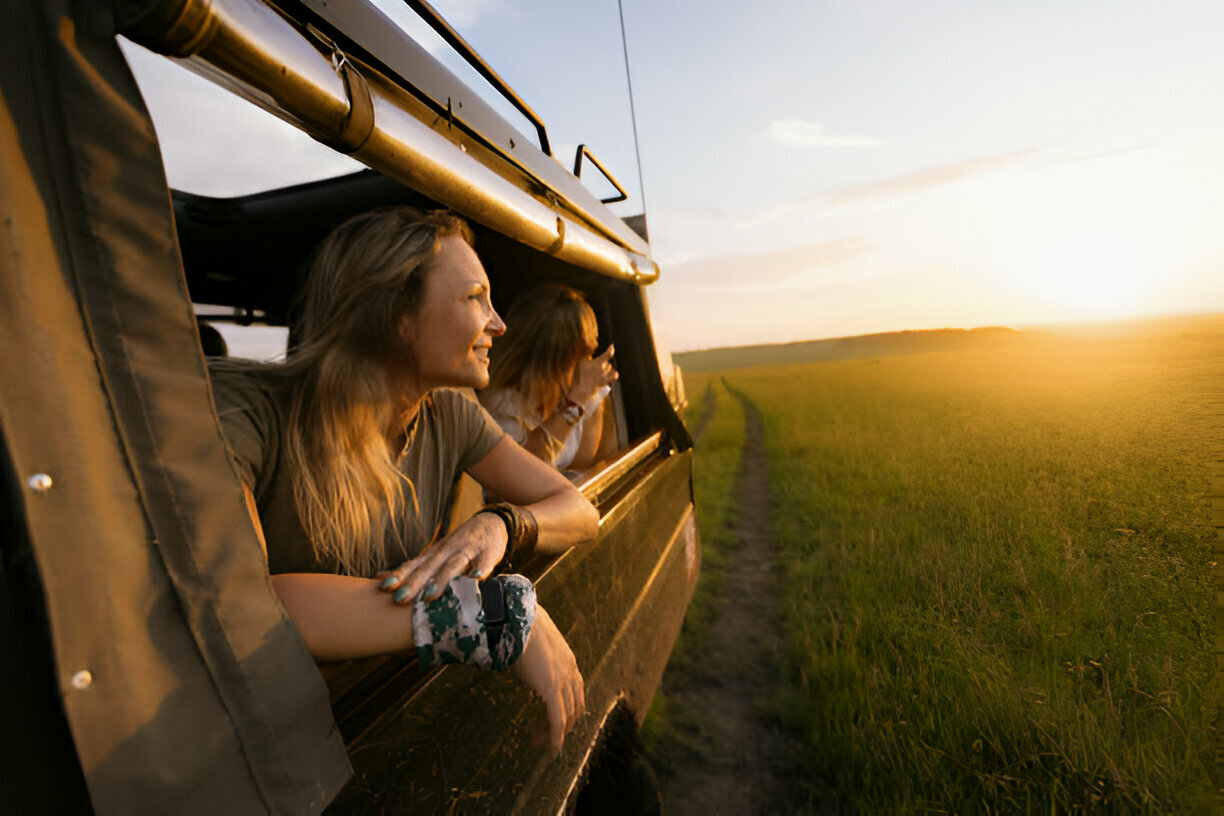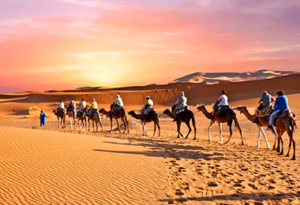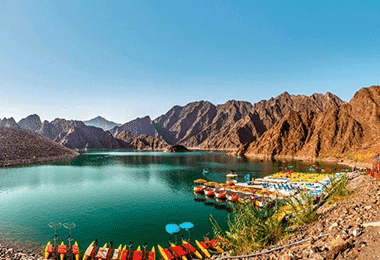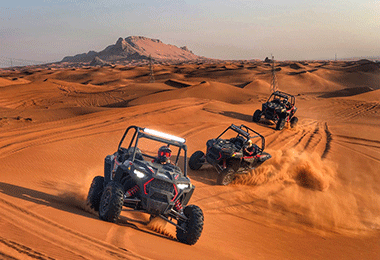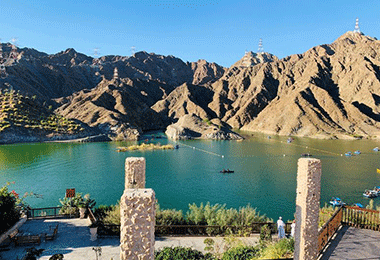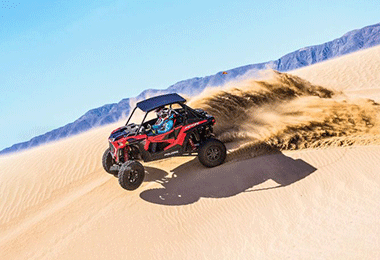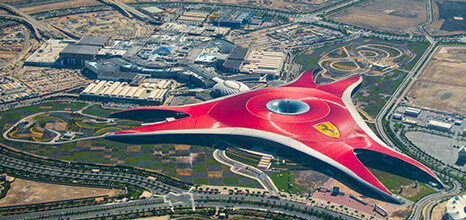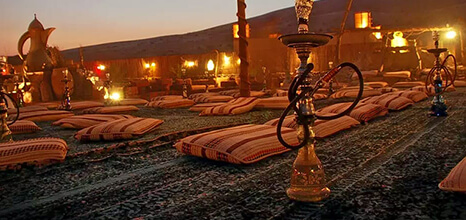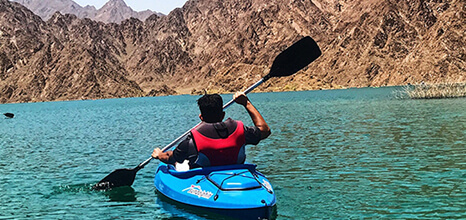Capturing memorable moments on a safari tour is essential as it allows you to relive the breathtaking experiences and wildlife encounters. Whether it’s a beautiful sunset, a magnificent lion, or a group of elephants in their natural home, these moments are worth keeping.
In this blog, we will explore various safari photography tips and techniques to help you capture the best shots during your safari adventure, ensuring you can cherish and share those memories for years.
Before diving into the tips and techniques, let’s explore mesmerizing essence of this rugged landscape to capture!
Capturing the Best of a Luxury Desert Safari Tour
Desert Landscapes
The vast desert landscapes, rolling dunes, intricate patterns, and beautiful shadows provide an ideal backdrop for breathtaking landscape photography. Capture the expanse of the desert, the interplay of light and shadow, and the textures formed by the wind shaping the sand.
Sunset and Sunrise
The desert is famous for its awe-inspiring sunsets and sunrises. The wide open sky transforms into a stunning blend of warm oranges, vibrant pinks, and serene purples. Capture the magical moments as the sun dips below the horizon or peeks over the dunes, casting a warm glow on the desert.
Camel Caravans
Embrace the timeless allure of camel caravans, an integral part of desert life. These majestic creatures, adorned with colorful blankets and intricate saddles, create captivating subjects for your photographs. Capture their graceful presence and the interplay of light and shadow on their humps, representing the rich cultural heritage they embody.
Desert Wildlife
Despite the harsh conditions, the desert is home to a surprising variety of wildlife. Keep an eye out for Arabian oryx, gazelles, desert foxes, and reptiles adapted to this arid environment. Patience and a keen eye are essential for capturing these elusive creatures in their natural habitats.
Bedouin Culture
Engage with the local Bedouin people and capture the essence of their vibrant cultural traditions. Every aspect of Bedouin culture tells a unique story, from colorful clothing and intricate jewelry to traditional dances and music. Photograph their warm hospitality, distinctive architecture, and the serene beauty of their desert camps.
Night Sky
The desert offers a remarkable opportunity for astrophotography. With minimal light pollution, the night sky unveils a breathtaking canopy of stars. Capture the beauty of the Milky Way, shooting stars, or even experiment with capturing mesmerizing star trail images.
Adventure Activities
Desert safaris are not just about capturing tranquility; they also provide thrilling adventure activities. From exhilarating dune bashing and sandboarding to exciting quad biking and camel riding, these action-packed moments add a dynamic element to your photo collection.
Safari Photography Guide
Choosing the right equipment
When preparing for a safari tour, selecting the appropriate camera is crucial. You have options like DSLR, mirrorless, or compact cameras, each with advantages. Additionally, consider lens selection based on whether you prefer a versatile zoom lens or specific focal lengths for particular shots. Don’t forget essential accessories such as a sturdy tripod, extra batteries, and ample memory cards to ensure you never miss a shot.
Familiarizing yourself with the equipment
Before setting off on your safari adventure, take the time to familiarize yourself with your camera’s settings and features. Understanding how to adjust the aperture, shutter speed, ISO, and other locations will give you better control over your photographs. Practice shooting in various conditions to get comfortable with your equipment and explore its capabilities thoroughly. Regularly clean and maintain your gear to ensure optimal performance throughout your journey.
Understanding the Wildlife and Environment
Researching the destination
Researching the destination before your safari tour is crucial. Learn about the local wildlife and their behavior to anticipate and capture unique moments. Understand their habitat, feeding patterns, and movement to increase your chances of getting the perfect shot. It lets you focus your photography efforts on specific animals or moments that align with your interests.
Adapting to the environment
The safari environment presents unique challenges and opportunities. Familiarize yourself with the lighting conditions you will likely encounter, such as harsh sunlight or low-light situations. Adjusting your camera settings accordingly, such as exposure compensation, will help you achieve well-balanced photographs. Additionally, be prepared to deal with weather challenges, such as rain or dust, and take necessary precautions to protect your equipment. Being adaptable and flexible will allow you to make the most out of every photographic opportunity.
Composition and Framing
Rule of thirds and other composition techniques
Composition plays a vital role in creating visually appealing photographs. The rule of thirds is a popular technique that involves dividing the frame into thirds vertically and horizontally and placing your subject or points of interest along these lines or at their intersections. Additionally, explore other composition techniques, such as leading lines, framing, and symmetry, to add depth and interest to your images.
Considering the background and foreground elements
While focusing on your subject is important, pay attention to the background and foreground elements. A cluttered or distracting background can take away from the impact of your issue. Look for clean, uncluttered environments that enhance your subject and tell a compelling story.
Framing techniques to create interest and focus
Framing is a powerful technique that can draw the viewer’s attention to the subject and create a sense of depth. To surround your subject, look for natural frames, such as tree branches or rock formations. This technique can add a unique perspective to your photographs and make them more engaging.
Utilizing leading lines and symmetry
Leading lines can guide the viewer’s eye through the image and create a sense of movement or direction. Look for natural or artificial lines, such as paths, rivers, or fences, that can lead the viewer toward your subject. Similarly, symmetry can create a sense of balance and harmony in your photographs. Look for symmetrical environmental elements or use reflections to achieve this effect.
Capturing Wildlife
Patience and anticipation
When capturing wildlife on a safari tour, patience and anticipation are key. Wildlife photography often requires waiting for the perfect moment to catch a specific behavior or action. Take time, observe the animals, and prepare for unexpected opportunities. Patience will reward you with those breathtaking shots.
Focusing techniques for moving subjects
Wildlife is constantly on the move, so mastering focusing techniques is crucial. Use continuous autofocus (AI Servo) to track moving subjects and ensure they remain sharp. Practice panning, where you follow the subject’s movement with your camera to capture them in motion while keeping the background blurred for a dynamic effect.
Capturing action and behavior
Wildlife photography is about storytelling. Capture the action and behavior of animals to tell compelling narratives. Focus on interactions within a group or unique behaviors like hunting or playing. These moments bring life to your photographs and make them more captivating.
Zooming in on details and capturing portraits
Zooming in on details allows you to capture wildlife’s intricate patterns and textures. Use a telephoto lens or zoom function to focus on specific features like a lion’s mane or a bird’s feathers. Also, remember to capture intimate wildlife portraits that highlight individual animals’ unique characteristics and expressions.
Dealing with Challenging Situations
Low-light and night photography
Safaris often offer opportunities to capture wildlife in low-light conditions or at night. Mastering low-light photography techniques, such as using a wide aperture, higher ISO, and stable support like a tripod, will help you capture stunning images in challenging lighting situations.
Photographing wildlife from a moving vehicle
Safari vehicles can provide a unique perspective for wildlife photography. However, they introduce additional challenges like vibrations and limited maneuverability. Use a bean bag or a stabilizing device to reduce vibrations, and be ready to shoot through open windows or sunroofs. Anticipate animal movements and position yourself for the best angles.
Dealing with dust and other environmental factors
Safaris can be in dusty environments, especially during dry seasons. Protect your gear by covering it when not in use and using lens hoods to minimize dust on your lenses. Carry a blower brush and microfiber cloth for quick cleaning. Be prepared for changing weather conditions by having rain covers or protective gear to shield your equipment.
Overcoming distances and obstacles
In wildlife photography, you may encounter situations where the animals are far away or obstructed by vegetation. Use telephoto lenses or teleconverters to bring distant subjects closer. Experiment with creative compositions, incorporating foliage or branches to add context and depth to your images.
Ethical Considerations
Respecting wildlife and their habitats
Responsible wildlife photography means respecting the animals and their natural habitats. Maintain a safe distance that doesn’t disturb or stress the animals. Avoid altering their behavior or causing harm for the sake of a photograph. Remember, the welfare of the animals should always come first.
Avoiding disturbance or harm to animals
Observe ethical guidelines when photographing wildlife. Do not chase, bait, or harass animals for better shots. Respect their natural behaviors and habitats. Be mindful of breeding or nesting seasons when disturbance can significantly impact wildlife.
Following local regulations and guidelines
Research and adhere to local regulations and guidelines for wildlife photography. Different destinations may have specific rules to ensure conservation and minimize human-wildlife conflicts. Familiarize yourself with these guidelines and respect the authorities’ instructions.
Promoting responsible photography practices
As a photographer, you have a responsibility to educate and inspire others. Share your knowledge and experiences of ethical wildlife photography. Encourage others to follow responsible practices and appreciate the beauty and importance of wildlife conservation.
Wrap up!
Whether you are a beginner or an experienced photographer, our safari photography guide has something for everyone to enhance their wildlife photography skills. Remember, while capturing these incredible moments, respect the environment and the local culture. Be mindful of any photography restrictions and seek permission when necessary.
With our Safari photography tips, let your camera be a conduit to preserve the desert’s beauty, diversity, and spirit, allowing others to experience its magic through your photographs. So, pack your camera gear, embrace the spirit of adventure, and let the desert unfold its wonders before your lens.
If you’re planning a desert safari tour, look no further than Desert Evening Safari! We offer the best packages that will make your experience truly unforgettable. Reserve your spot now, and let us guide you through an extraordinary desert safari experience.




